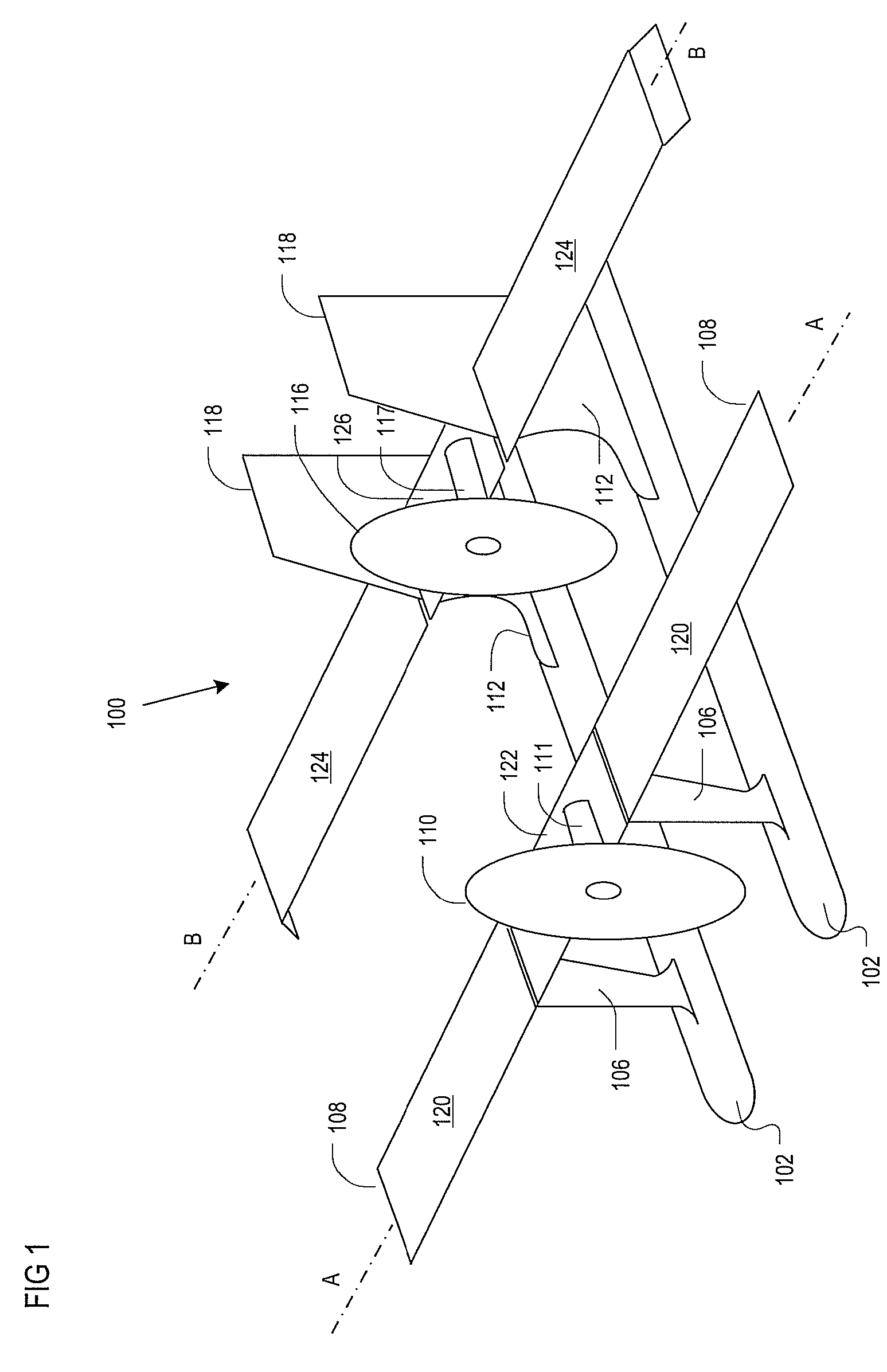Amphibious aircraft
a technology for amphibious aircraft and aircraft, applied in the field of amphibious aircraft, can solve the problems of inability to stabilize the dynamic response of the surface, limited take-off and landing, and near-surface stalls and crashes, and achieves the effects of reducing the tendency for ballistic launch, and facilitating the movemen
- Summary
- Abstract
- Description
- Claims
- Application Information
AI Technical Summary
Benefits of technology
Problems solved by technology
Method used
Image
Examples
Embodiment Construction
[0042]FIGS. 1-4 depict various views of amphibious aircraft 100 in accordance with the illustrative embodiment of the invention. In particular, FIG. 1 depicts a perspective view, FIG. 2 depicts a side view, FIG. 3 depicts front view, and FIG. 4 depicts a top view.
[0043]Referring now to FIGS. 1-4, amphibious aircraft 100 comprises hulls 102, canard wing support struts 106, canard wing 108, canard wing prop 110, canard wing engine 111, main wing support struts 112, main wing 114, main wing prop 116, main wing engine 117, and tail 118, interrelated as shown.
[0044]In the illustrative embodiment, hulls 102 are semi-submersible, wave-piercing, catamaran “amas.” Referring to FIGS. 5A (side view) and 5B (cross section thru s-s), hulls 102 have ledges or “strakes”576 that provide lifting / planing regions below the waterline.
[0045]In the embodiment that is depicted in FIGS. 2 and 4, hydrofoil “akas”230 and 232 depend from respective fore and aft regions of the top of each hull 102. In an alter...
PUM
 Login to View More
Login to View More Abstract
Description
Claims
Application Information
 Login to View More
Login to View More - R&D
- Intellectual Property
- Life Sciences
- Materials
- Tech Scout
- Unparalleled Data Quality
- Higher Quality Content
- 60% Fewer Hallucinations
Browse by: Latest US Patents, China's latest patents, Technical Efficacy Thesaurus, Application Domain, Technology Topic, Popular Technical Reports.
© 2025 PatSnap. All rights reserved.Legal|Privacy policy|Modern Slavery Act Transparency Statement|Sitemap|About US| Contact US: help@patsnap.com



